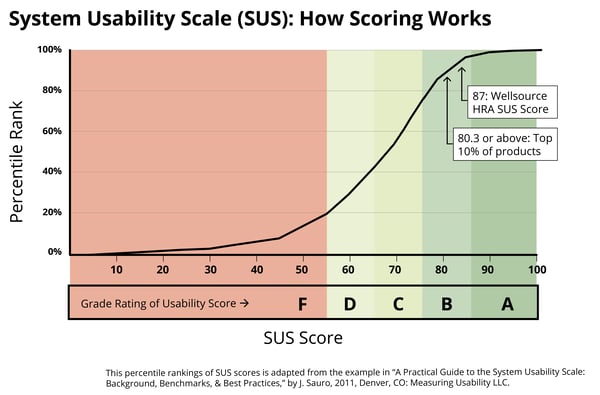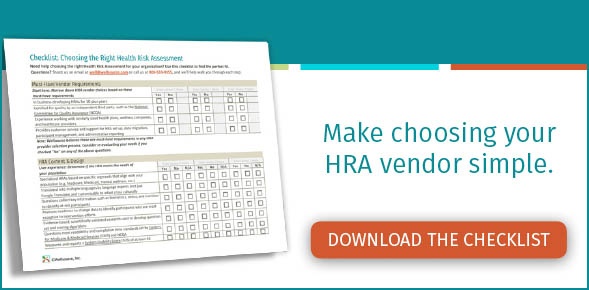This blog post is from Wellsource Director of Quality Assurance Lauren Smith, whose work centers on the quality of our products through testing, innovation, and paying close attention to processes, product development, hiring, and management of his team.
Usability is critical for user engagement. What is usability? Well, that could be a whole blog article on its own, but I’ll paraphrase the International Organization for Standardization (ISO) definition: Usability is the extent to which a product can be used effectively, efficiently, and with satisfaction.
Consider usability in the context of your health risk assessment (HRA). You work hard to raise awareness and encourage your population to log on and complete their HRA. You might even offer them incentives to take it. When someone starts an online assessment, you want them to enjoy the experience and complete the assessment. Increasing usability is the key to making that happen.
But how do you know if you hit the mark? There is no one-size-fits-all approach to making products more usable, but design iteration with user feedback is a common prescription for improvements in usability. At Wellsource, we perform regular usability tests to measure our product against industry standards.
Some of the data we collect allows us to compute a usability score: The System Usability Scale (SUS) measures the ease-of-use for computer-based programs, allowing us to make comparisons between systems. Developed in 1986, this 10-question survey measures the experience of a person using a computer application. SUS is a valid measure of usability that has been referenced in over 1,300 published articles.
The inputs to the SUS calculation consist of 10 questions with responses ranging from “strongly agree” to “strongly disagree.” The tool provides reliable results with just a few test users, according to research by Jakob Nielsen, principal of the Nielsen Norman Group which focuses on developing research-based user experience guidance.
SUS scores range from 0 (the worst) to 100 (a perfect sore). The average SUS score for internet-based web pages and applications is 68.05. Scores above 68 are above average; scores below 68 are below average.

SUS scores are not a percentage of anything. The 0-100 scale is arbitrary, with scores from hundreds of tests following a distribution similar to the A-F grading scale found at many universities. Research shows that people are more likely to recommend an application (or an HRA) to their friends if it scores at least 80.3. This score also puts a product in the top 10% of all products tested.
How do Wellsource Health Risk Assessments measure up when it comes to user experience?
My team – the Wellsource Quality Assurance team – collects quantitative and qualitative data during annual usability testing. This SUS evaluation includes measures of the following areas:
- attractiveness
- ease of use
- understandability
- overall experience
The results? The Wellsource HRA consistently achieves SUS scores in the upper 80s. Our most recent SUS score was 87. Users rate our system as easy to use and understandable. They also report a high level of satisfaction with their HRA-taking experience. Our Health Shelf® self-management tool score is 85.
Wellsource products rank in the top 5% relative to other applications in terms of usability. We adhere to rigorous review of our products to ensure they are readable, understandable, and easily consumable. Our products exceed understandability guidelines.
This work is important to our company and a priority for our product because we know population health professionals rely on the HRA data our product collects. That data contributes to improving overall population health and impacting individuals' lives. Through our continued commitment to high usability standards, population health professionals can be confident that their participants will find our solutions understandable and easy to use - from beginning to end.
There’s a lot to consider when evaluating the quality of your HRA. We’ve created a checklist to help you focus on the metrics that matter most. Download our Checklist: Choosing the Right Health Risk Assessment below to see what other things you should consider when choosing your HRA.








